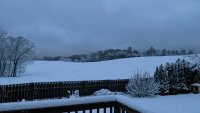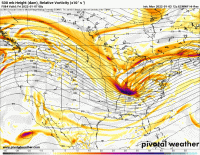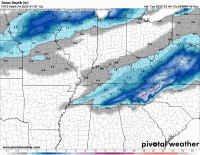I've had a chance to start looking at some of it this evening, and there's some key differences to the most recent one.
First, colder, more seasonable air is going to be in place, but mainly across northern parts of East Tennessee up into SE KY and SW VA. Second, this shortwave trough moving through Thursday night is not as far south, or as strong, as the upper-level trough that moved through last night. This should limit the overall dynamics and snowfall rates. Third, precipitation type and amounts will all depend on the track of the surface low. This track is still very uncertain right now. Model guidance is still all over the place.
Just from my time forecasting around here, we usually have a tough time getting much snow in the valley unless it's a pretty significant shortwave trough that digs pretty far south. If enough cold air and longwave troughing across the east is present, you don't necessarily have to have the former to get some snow, but that's not the case in this situation. This flatter, quick trough would give us a shorter window for precipitation with less upper-level dynamics to support heavy snow. IMO, we'll probably see some light precipitation across the region Thursday night into Friday morning with the best chance of snow across the higher elevations and areas north of I-40, especially up near KY and VA. I just have a hard time buying the ECMWF solution just yet until I see some better consistency.
I will say that I won't be surprised if the GFS shifts to something more like the ECMWF output and snow totals start getting nudged up. The one thing that stands out is that the GEFS plumes show about a 2" mean for snow on Thursday night at TYS compared to the operational run which has nearly nothing. Tells me that the operational run may be an outlier at this time.
The shortwave that will bring us this unsettled weather is forecast to be over the CONUS area by tomorrow evening, so it should be sampled a little better with RAOBs and satellite coverage along the Western CONUS for model ingestion by 0z Wednesday.
The attached GIF really shows the distinct differences in how each model is handling the shortwave as it moves into the Tennessee Valley 0z Friday. That's the reason for the high uncertainty.
View attachment 425709









